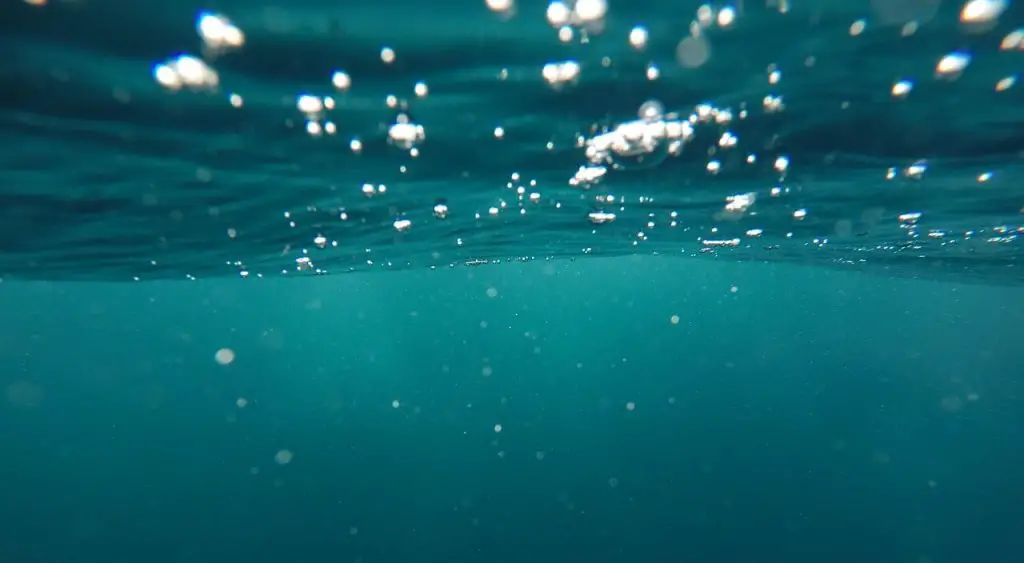This post may contain affiliate links. As an amazon associate I earn from qualifying purchase. Learn more
Wondering why your saltwater aquarium salinity is too high? Learn what causes salinity to increase in a saltwater tank, how to reduce it safely, and what you should do to avoid this problem in the future.
When it comes to saltwater aquarium salinity, keeping stable parameters is vital for protecting corals and fish’ health. A sudden change of the salinity levels could potentially affect your system and put the inhabitants in danger.
Ideally, you should check the salinity at least once a week so you can have time to adjust it during the weekly water changes. However, sometimes things get out of control even if we think we are doing everything right.
Here are the most important things you should know if you have problems reducing the salinity in your tank.

Contents
What Salinity is too High for a Saltwater Tank?
The average salinity of ocean water is around 35 ppt (1.026 specific gravity). As general guidance, it’s best to keep your salinity at 1.026 specific gravity in your saltwater tank.
However, depending on what livestock you want to keep, those ranges may vary. For example, brackish water tanks should maintain salinity from 1.007 to 1.013. Fish-only saltwater tanks thrive in different levels (1.017 to 1.023). Reef tanks are best kept between 1.023 to 1.026.
Definition of high salinity is every deviation of those ranges, although small fluctuations of 0.001 in either direction probably won’t hurt the organisms in your tank.
What Causes Salinity to Increase in the Tank?
When evaporation occurs in saltwater aquariums, the volume of the water decreases, but the salt stays in the system.
Therefore, the water gets denser, and the salinity levels increase. Topping off the tank with freshwater will bring back the parameters on point.
The most common mistake beginners make is topping off the tank with saltwater, resulting in increased salinity in the tank.
How Do You Fix High Salinity in a Saltwater Tank?
Fixing the salinity should be your number one priority. Be careful, and don’t make sudden changes because sometimes large fluctuations can cause more harm than keeping the salinity level on a higher level.
The first thing you should remember and keep always in your head is never to top off your tank with saltwater. Auto top-off systems are an excellent way to solve this problem, and investing in one will make your life easier.
Replace your saltwater with freshwater gradually over the course of a few days, and measure the salinity with every water change using a refractometer.
Make sure that you have a reliable refractometer that’s properly calibrated. False readings can mess up your tank even further. If you are not familiar with using a refractometer, check this guide on how to use a refractometer to measure salinity.
After you’ve lowered the salinity level in your reef tank, keep with regular checks at least once a week.
Is 1.030 Salinity too High?
Salinity levels of 1.030 specific gravity are too high for a saltwater aquarium system. Ideally, it would be best if you kept the salinity levels stable, staying at 1.026.
If it’s 1.030 or above, gradually dilute it, so the marine organisms don’t get shocked. Sudden changes in salinity could harm or, even worse, cause death to the animals in your tank.
Is High Salinity Bad for Fish?
In general, maintaining a stable salinity of 1.026 (35 ppt) in your saltwater aquarium is the best way to ensure that your fish are living in optimal conditions.
Most marine organisms thrive at 1.026 (average ocean salinity level), but they all have a certain threshold and can tolerate slight variations in the salinity.
Most fish can tolerate salinity within a range from 1.023 to 1.028, which doesn’t mean it can’t harm them or have adverse effects on their health.
Saltwater fish better tolerate lower salinity levels than higher salinity levels.
What is the Average Salinity of Ocean Water?
The average salinity of ocean water is around 35 ppt (parts per thousand). In layman’s terms, there are approximately 35 grams of dissolved salt in every liter of water.
However, all parts of the ocean don’t have the same salinity levels. It varies from place to place, and there is a reason why.
For example, in some parts of the world where it rarely rains, and there is a warmer climate, the evaporation is higher, so the salinity levels increase.
A great example is the Mediterranean Sea, where the salinity levels reach up to 38 ppt and above.
In other parts of the world, where it rains a lot, the salinity levels in seawater are lower. The freshwater from the rain dilutes the salt water, therefore the reduced salinity.
The ocean water around the Arctic, or Antarctica, also has lower salinity because of the melting icebergs that add fresh water into the ocean.
Does High Salinity Affect Corals?
A higher concentration of dissolved salts provides a higher concentration of the elements corals use for growth. But how high can the salinity go up until it has adverse effects on the coral’s health?
On average, the salinity levels in the oceans are around 1.026 specific gravity (35 ppt). In our home aquariums, we try to replicate the same levels, which is why most aquarists tend to achieve a stable salinity of 1.026 specific gravity.
However, sometimes, mainly due to our fault, the salinity levels may go off the chart. High salinity levels above 1.027 specific gravity may have adverse effects on your corals but probably won’t harm them enough to cause death.
On the other hand, every measurement above 1.030 specific gravity is a serious situation, and you should definitely take action. One of the most common reasons for the death of marine organisms is sudden large changes in salinity. So, be careful and whatever you do, do it gradually.
Related Posts: